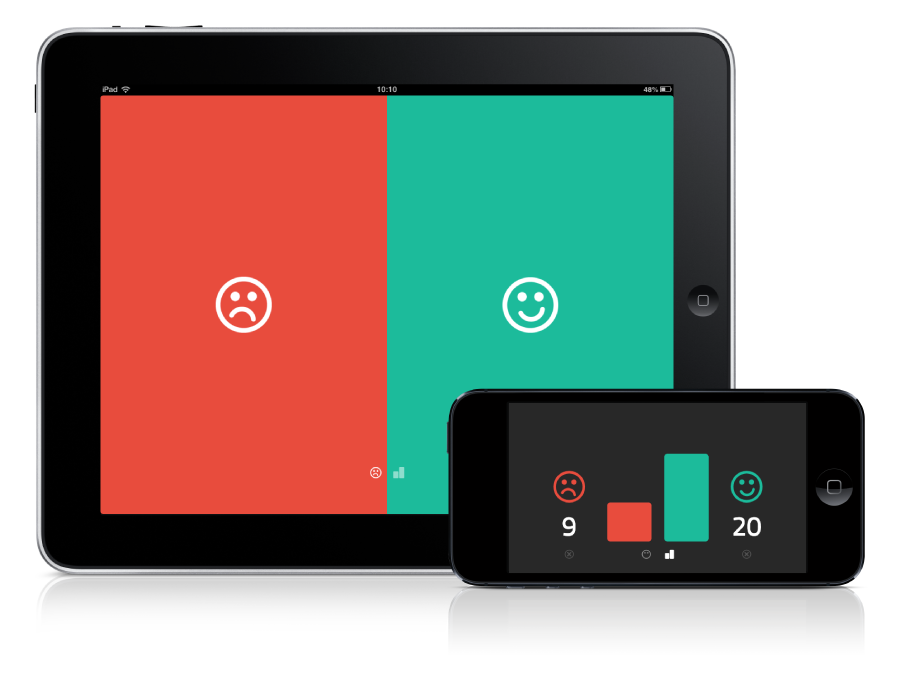One of the problems I’ve experienced with measuring performance within digital agencies and project teams is the focus on money. While focusing on financial metrics gives a really good indicator on how well things are going based on how we measure businesses, it often misses the real truth of what is going on and we often miss some vital signs of what could happen in the future.
What we need is another metric, something that can be used alongside the financial numbers, something that measures how well things are going. We need a way to measure how happy the client is, and how happy the project team are. We need a way to measure happiness.
What does good look like?
All our current methods for measuring success (in projects, teams and businesses) are based on three sets of metrics:
- Money, e.g. bottom line, top line, profit, loss etc.
- Effort, e.g. hours worked, amount of stuff produced, stories completed, bugs resolved etc.
- Opinion, e.g. how we feel about it, our view on quality etc.
The problem with the last set of metrics (opinion) is that it is opinionated, personal and hard to get a accurate measure that can be benchmarked and compared against. This is the area where the measure of happiness could sit. When combined with the other more accurate sets of metrics we often find a huge gap between the performance on paper (as defined by the first two sets) and the reality of the experience on the ground (based on the team and client’s happiness).
Without an accurate measure of happiness, we miss out on some key insights including:
- Probability of future work from the client, based on how happy a client is with our work
- Predicting the churn rates and burn out within the team
- Measuring the client or team relationship
- Getting a fuller picture of the project as a whole
Balls in buckets
One of the techniques already used in client workshops is called ‘Balls in buckets’. We use two buckets, a happy bucket and a sad bucket and quite a few balls. As the client leaves the workshop we ask them to drop a ball in either of the buckets, this not only gives a good indication of how well things have gone, but also acts as an ice breaker to actively talk about the workshop experience and gain valuable feedback.
Looking outside the agency and digital worlds, there is a great example of this in UK supermarkets. Each customer is given a green token when they pay for their groceries. Next to the door are three see-through containers to deposit the tokens in, each of which represents a great local cause. The customer can then choose which cause they want to support. As the above example this not only indicates which cause is the most supported (in this case winning the weeks charity fund) but it also acts as an ice breaker to get people talking about the causes and how well the supermarket is supporting them.
Both these examples have some really simple concepts in common:
- The user decides between a couple of simple choices
- It’s quick and easy to vote
- Users vote anonymously
- The user gets to see the difference their vote has made
Meet Appy
By combining these simple concepts with the advantages of an internet connected device such as realtime results, analytics and remote monitoring, I created the idea for Appy. By applying the Lean Start-up approach. I created a quick and simple prototype to test out the idea. Following great user feedback I then developed it further using Design-in-Browser and lots of experiments to create the simple and light weight interface for measuring happiness.

Appy is incredibly simple to use. Each person can choose between the happy face or the sad face to vote, avoiding any opinions in between. Swiping to the right reveals the live results, so the impact of each vote can be seen instantly. Appy has been successfully trialled in the following scenarios:
- At the end of client workshops to gauge the clients impression as they walk out, like the balls in buckets
- With remote teams to keep an eye on moral
- By the door in the office to measure how well each day has gone
- At a speaking event, to gauge the audience response
- As a lead generation tool to collect leads from the most aligned people in the audience at the speaking event
Measuring happiness has proven to be a valuable addition to the other sets of metrics (money and effort), often providing context and meaning to events as trends start to appear allowing the creation of early indicators to prevent projects failing. Because of Appy’s simplicity it also acts as an ice breaker opening up conversations around happiness and project performance.
Give it a try
Appy was a fantastic experiment in both measuring success in different scenarios and also in evolving a digital product in a lean way using rapid prototyping, design-in-browser and quick feedback loops with real users. I’d like to know what you think, where and how would you use it? Please give it a try at www.christhelwell.com/appy/ and let me know what you think.
